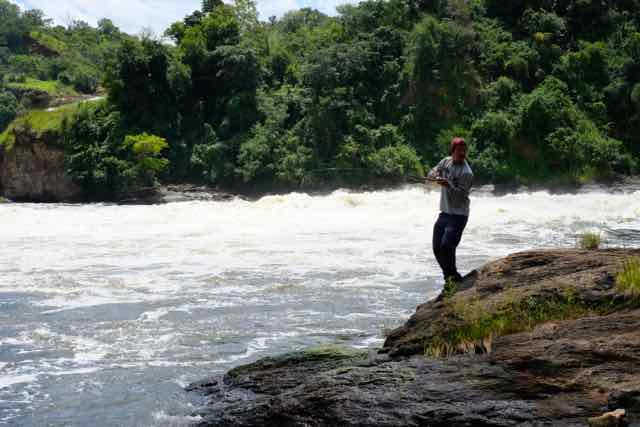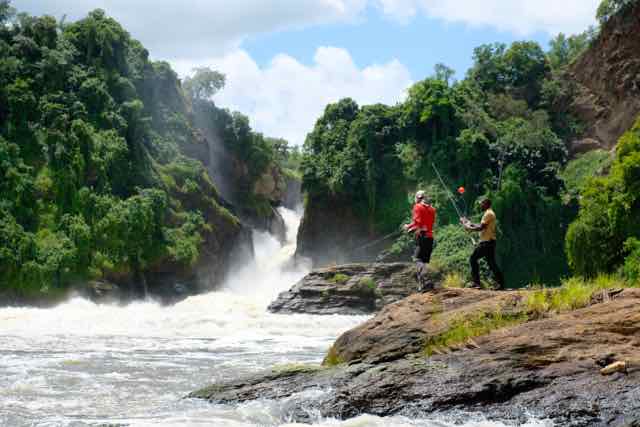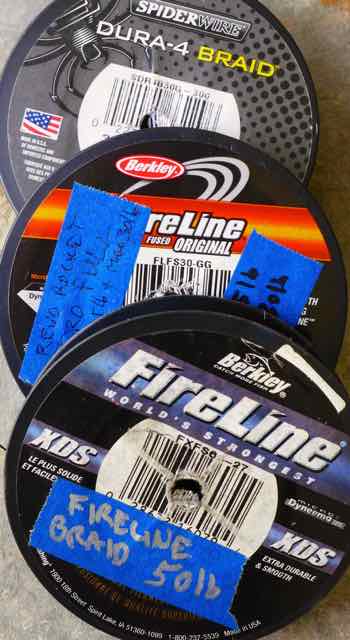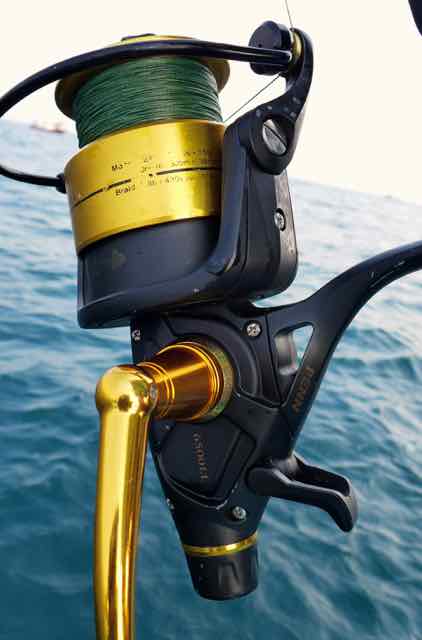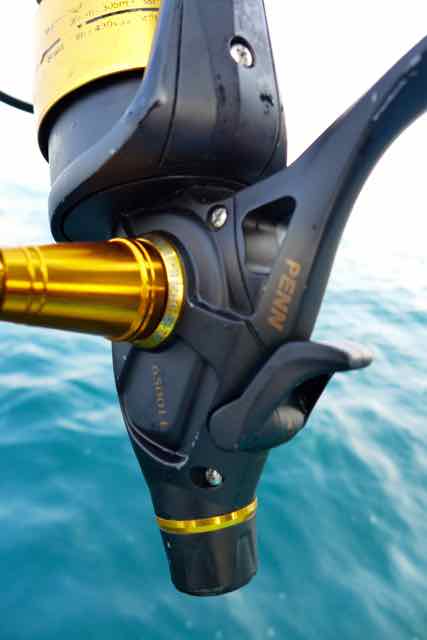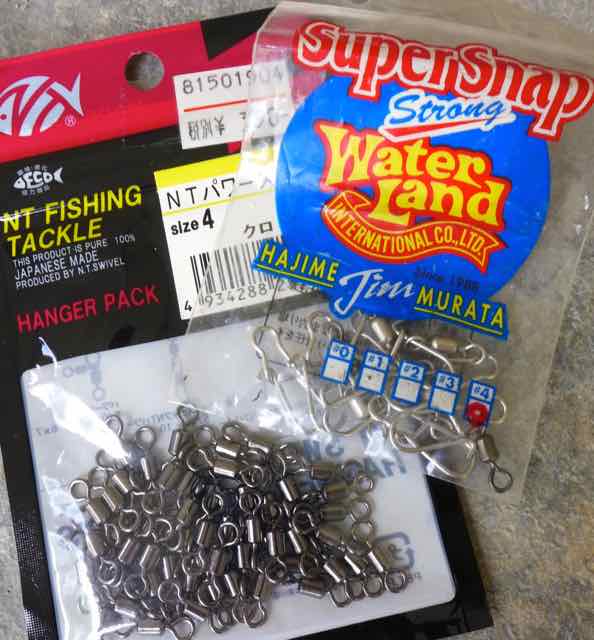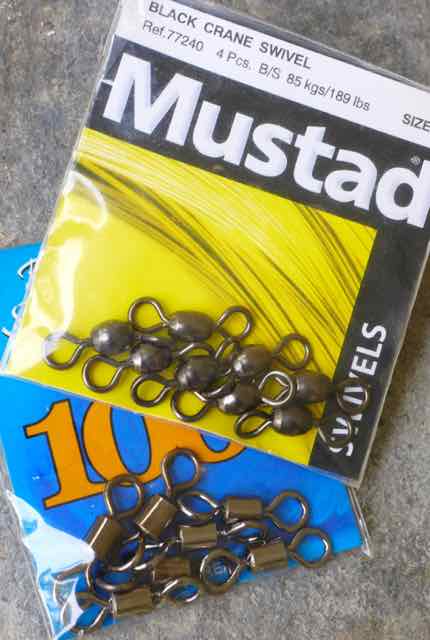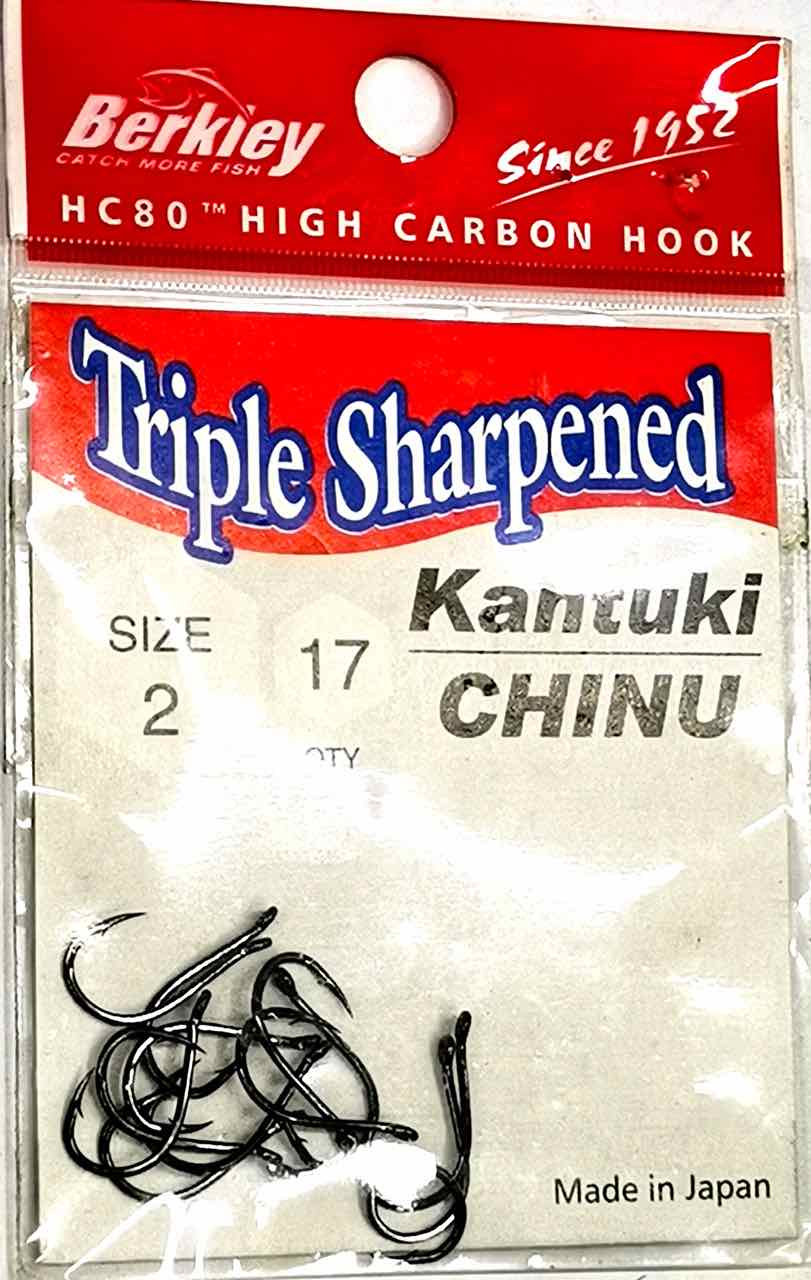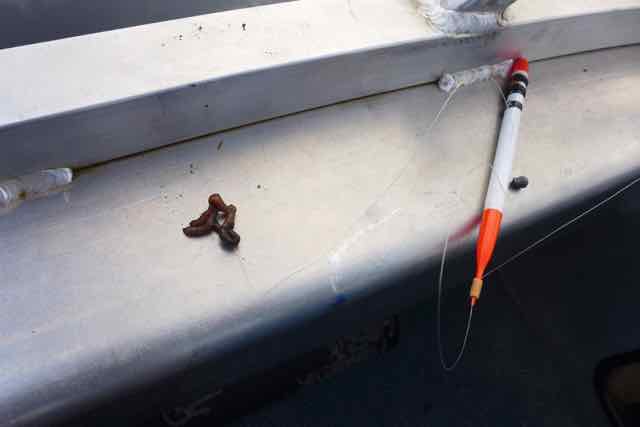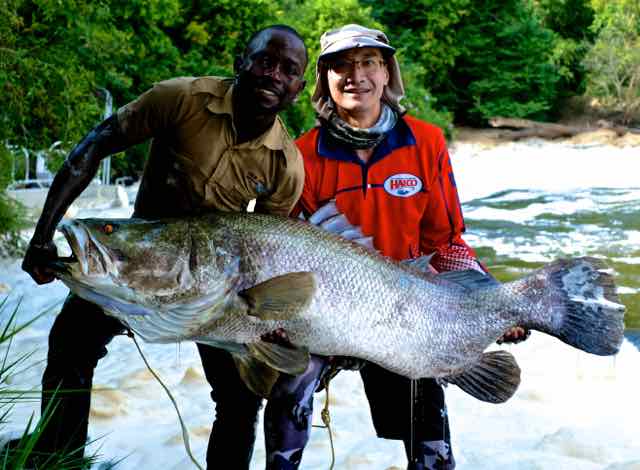
My
Nile
perch Fishing Tackle for
Murchison
Falls, Uganda, Africa
By Christopher S.G. Tan
I am an avid baitcaster, so for lure casting, I
use the large Abu Garcia Revo Toro Rocket baitcaster. I can
get almost 200metres of 50lb Berkley braid on the spool. I
think around 200metres of line should be the minimum length of
any sized line used because the big Nile perch can easily take
out 100m of line.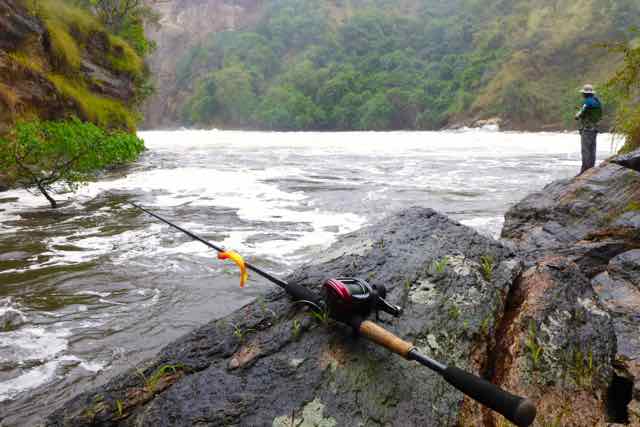
A method I used on the last trip to increase the line capacity on the bait was to have a backing of 30lb braid and a topshot of a hundred feet of 50lb braid. The topshot is the line most likely to take the abuse of wear from casting, and contact with debris, weeds, wood and rocks. This improved my line capacity by 50%. The two braids were joined by making loops or doubles with the bimini twist knot, then joining the loops together with the cats paw knot giving a 100% strength join.
If a Nile perch manages to get out 200 metres of
line in the gorge, it has probably gotten into the fast
current flow and is very likely unstoppable in the fast
current! With that amount of line out it probably will cut the
line off round a bend, point or rock outcrop. The rocks here
are extremely abrasive and very very quickly cut through the
line.
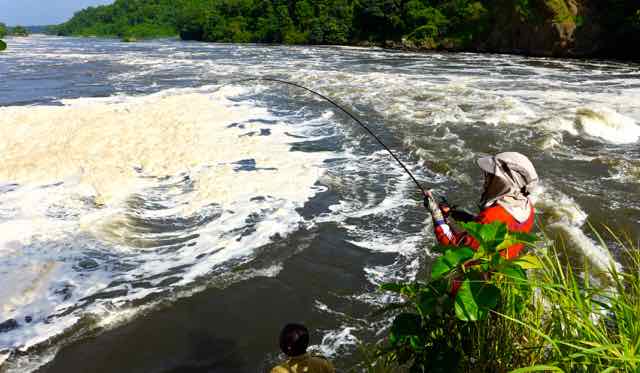
Do bring spare line, as getting spooled, or losing a lot of line before getting cut off by the rocks is likely in the gorge when the monster Nile perch gets into the strong currents.
A baitcaster capable of holding three hundred metres of 50lb line on the spool would have quite a bit of insurance, but then the baitcaster would get humongous. So it's a choice of ergonomics and comfort versus line capacity.
If I were to use a spinning reel for casting lures I would use a 6000 size Penn reel (e.g. Penn Spinfisher VI 6000) which gives a capacity of almost 300metres of 50lb braid. A Penn 5000 sized spinning reel would be the bare minimum size I would use.
For livebait fishing I found the overhead reels with a clicker, or spinning reels with a controlled free spool mechanism (e.g. Penn Live Liner) the ideal reels for livebait fishing here for Nile perch. The overhead reel in free spool with the clicker on, allows the fish to take the bait with minimal tension on the line. To set the drag, all it takes is pushing the lever drag up, or for stardrag overheads, just cranking the handle to engage the spool.
Likewise the spinning reel with a controlled freespool mechanism (Live Liner feature) does the same thing; just crank the handle and the normal drag will engage. These systems allow me to have my preset drag available immediately without having to fumble and guess what the drag might be while tightening the drag knob.
I used a Penn Spinfisher® VI Live Liner 6500 which holds plenty of 50lb braid. When fishing livebait with a balloon off the rocks (land-based), a spinning reel makes it easier to toss out the balloon and livebait than an overhead reel. So plan on using a spin reel for landbased livebait fishing.
The drag settings I set on the reels both for casting and livebaiting range from 10lb to 15lb drag straight off the reel.
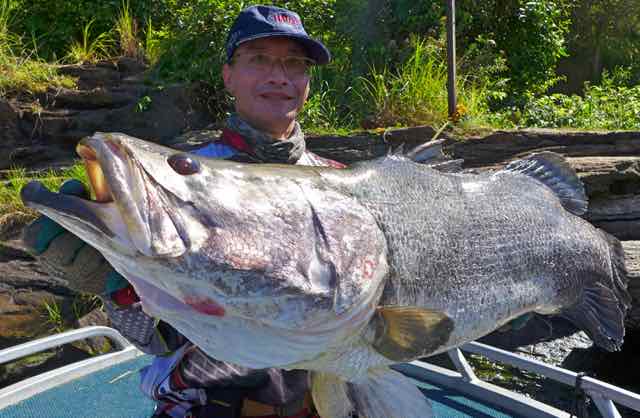
For an overhead reel I used an Accurate Box
BX400N lever drag reel. It is a small reel, so the line
capacity for Nile perch is the bare minimum.
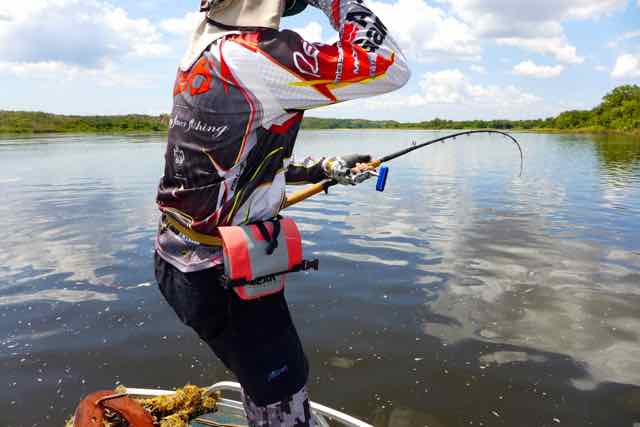
The rods I used for lure casting were in the 10-30lb or 15-40lb line class range. They are not specific models as I custom make my own multi-piece travel rods from whatever used rods/blanks I have. So these were made from Abu Garcia Hornet, Fenwick HMG, Penn, and others. I cut them up and make custom blanks, ferrules and spigots for the joins. All the rods I used for my fishing were custom hybrid multi-piece travel rods. They all have working loads that can take drag settings of 10lbs and higher.
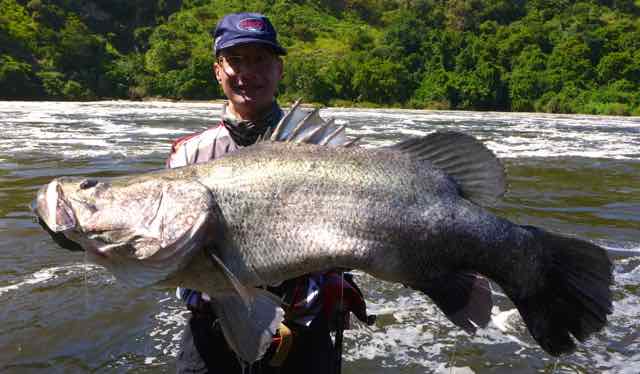
Rod length varied for both casting and livebaiting, both within the range of 7 to 8ft. I do not favour the really long rods like some anglers do, as they do not give the leverage necessary for assertive fish fighting styles unlike shorter rods. 7-8ft long rods are a compromise.
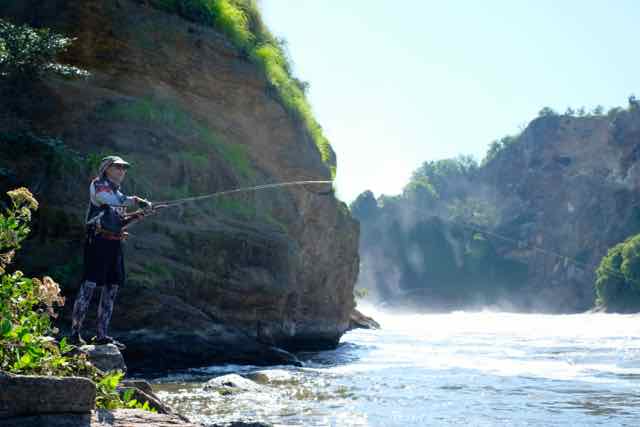
I fished according to IGFA rules, so the leader
(including lure or livebait hook) was under 6ft. The leader
used was 80lb monofilament, and I have used both nylon
(Berkley Trilene Big Game Leader) and fluorocarbon (Berkley
ProSpec Fluoro Leader). The FC mono tends to be harder and
probably more abrasion-resistant. The nylon leader is more
supple and seems to be more elastic or stretchy.
The knot used to join the 50lb Berkley braid to the mono leader (nylon or FC) is the FG knot. This slim knot is needed to get through the guides, especially for casting lures. Such heavy braid and mono leader, if tied with other traditional leader knots like the albright or uni-knot, would often catch or knock the rod guides on the cast, especially on spinning reels.
For the livebait rig, I tie the the mainline braid to a swivel (rated 80-100lb at least). The leader is tied to the swivel then tied to the Mustad inline circle hook (Mustad 39951) with a snell knot for a stiff hook rig. If the rig is a running ledger rig, the sinker is on the mainline braid above the swivel. The sinker weight would vary from 30-60gms depending on how far from the bank you want the bait to be placed. The lighter the sinker, the closer the bait will swing to the bankside due to the current.
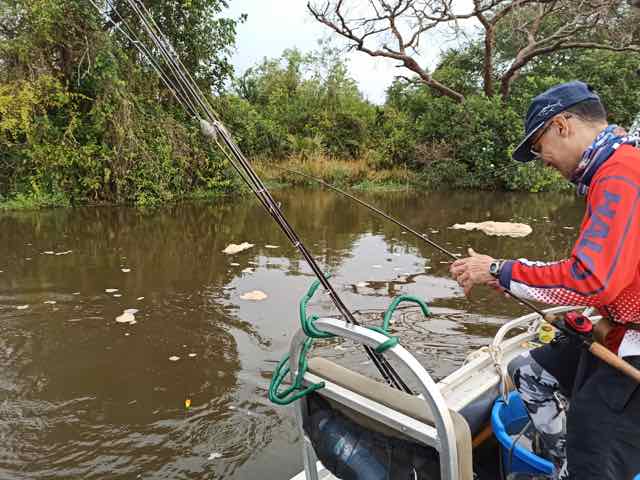
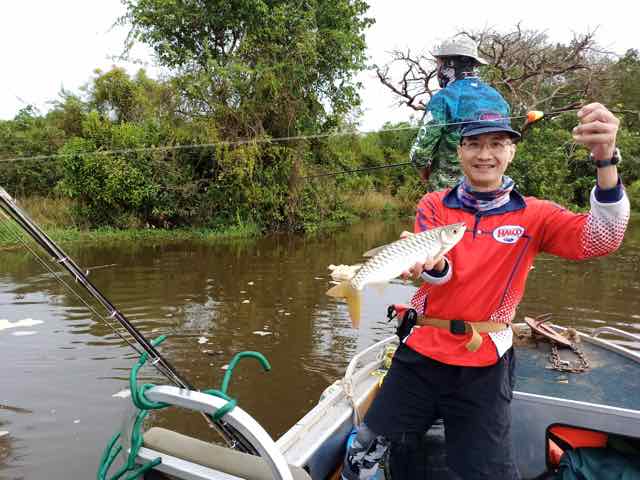
Livebait catching would require a simple light outfit of around a 6-12lb rod and a matching reel with light line, anything from 6-10lb will do. The baitfish are at the largest not more than half a kilo. The float can be anything from a round bobber to a pencil float. I use some split shot to aid in the casting. The hook size should be small enough to bait canned corn. The same size is also used for baiting earthworms for tilapia – size 10 to 12 (the printed sizes vary among brands, so the hook gap is around 5-7mm). Bring an assortment, and the guide can select the appropriate size for you to use.
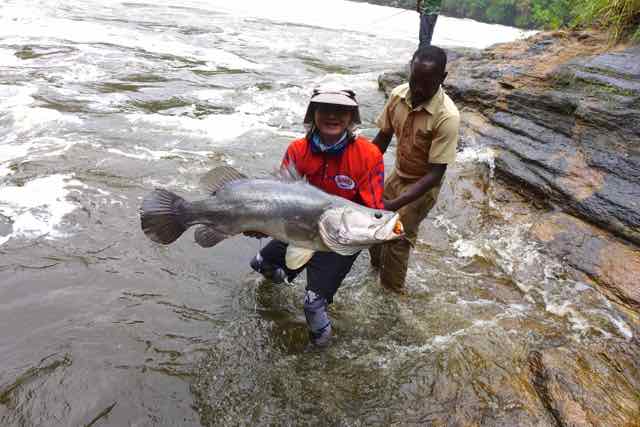
Other links:-
The
Tackle
for Nile perch - rods, reels, lines, leaders and terminal
tackle.
Conservation
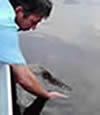
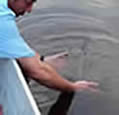
We need to protect and conserve our resources by practising catch and release of our sportfish and protecting the habitat of our fishes.
